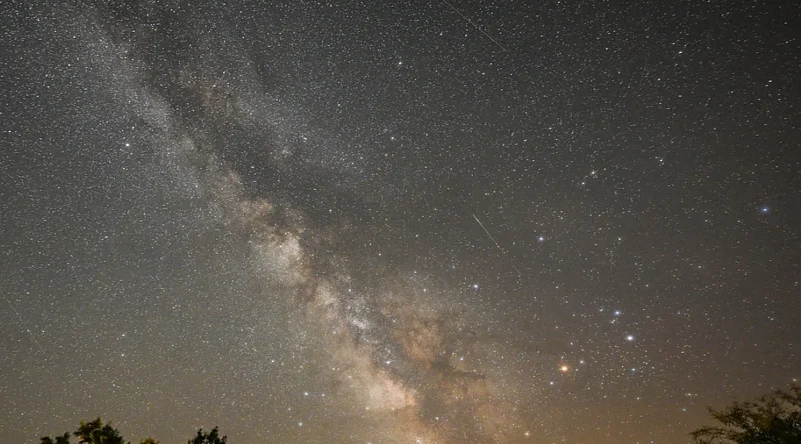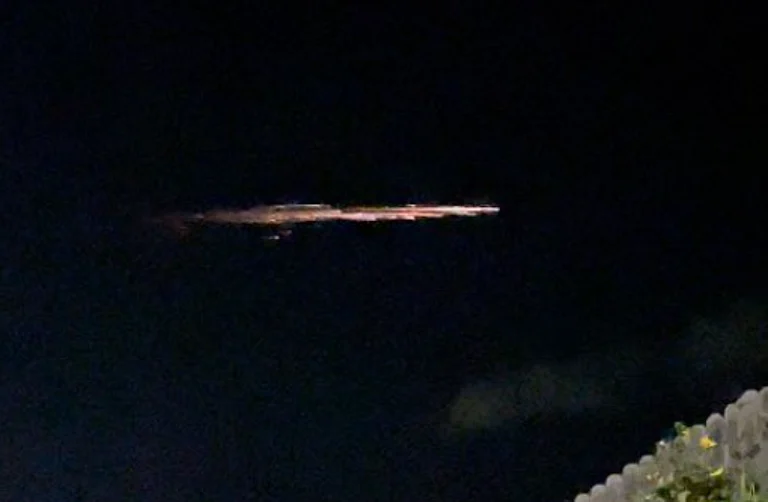After the recent total solar eclipse, sky-watchers have another celestial event to anticipate: the peak of the Lyrid meteor shower just before the rise of a full moon. While the moon's brightness might diminish the visibility of faint meteors, experts offer advice for optimal viewing.
The Lyrid meteor shower is expected to be most active from Sunday night into early Monday morning, as per the American Meteor Society. Meanwhile, April's full moon, also known as the pink moon, will reach its full phase at 7:49 p.m. ET on Tuesday.
Typically, observers can see up to 18 meteors per hour during the Lyrids' peak. However, this year, the moon's luminosity may hinder the sight of faint meteors. Ashley King, a postdoctoral researcher of planetary sciences at London’s Natural History Museum, notes that the shower will be most visible to those in the Northern Hemisphere. In contrast, the Lyrids' radiant won't ascend high enough in the Southern Hemisphere's night sky to offer a high rate of meteor sightings.
How to watch the Lyrids
To catch a glimpse of a Lyrid meteor, night owls should allow their eyes to adjust by stepping outside at least 10 to 15 minutes before attempting to spot one, King advises. Since meteors can appear anywhere in the sky, experts discourage the use of telescopes or binoculars due to their limited fields of view, as noted by NASA.
“The best time to go out (to see a meteor) is kind of the very early morning before the sun comes up,” King said. “If you can get somewhere dark and possibly get up high, so you can see lots of the sky, that’s ideal.”
The Lyrids may not be renowned for their speed or brightness, yet the shower has the potential to offer an enjoyable display of celestial lights — with the possibility of unexpected surprises.
“You never know quite what you are going to see, and seeing a meteor is such a really nice way to see what’s going on and see that the solar system is active,” King said. “In a way, (by seeing a meteor) you’re looking at … some of the oldest materials that formed in the solar system.”
Look to the sky for the Pink Moon
Turn your gaze skyward to behold the pink moon, a spectacle visible to people worldwide as Earth's natural satellite appears full for a couple of days.
Contrary to its name, this full moon will resemble any other, according to Paul Hayne, a planetary scientist at the University of Colorado Boulder. A full moon, when positioned near the horizon, might sometimes appear with a reddish tint, caused by the passage of light through Earth's atmosphere.
The pink moon earned its name from its annual appearance shortly after the onset of spring, reminiscent of the blooming Phlox subulata, a hot pink wildflower that blooms in early springtime, as noted by The Old Farmer’s Almanac.
It's advisable to observe the full moon with binoculars or simply with the naked eye, as it may appear too bright when viewed through a telescope, Hayne suggests.
“Our closest celestial neighbor has played a starring role in both human mythologies and the evolution of life on Earth. It’s also one of the most beautiful sights in the night sky that is visible without a telescope,” Hayne said in an email. “Looking up at a full moon is a great opportunity to be reminded of the vastness of space and our connection to the cosmos.”
More full moons in 2024
In 2024, there will be a total of 12 full moons, with the September and October lunar events predicted to be supermoons, as reported by EarthSky.
The definition of a supermoon may vary, but it generally refers to a full moon that is closer to Earth than usual, resulting in a larger and brighter appearance in the night sky. Some astronomers consider this phenomenon to occur when the moon is within 90% of perigee, its closest point to Earth in orbit.
Here's the schedule of the remaining full moons for 2024:
May 23: Flower moon
June 21: Strawberry moon
July 21: Buck moon
August 19: Sturgeon moon
September 17: Harvest moon
October 17: Hunter’s moon
November 15: Beaver moon
December 15: Cold moon
Solar and lunar eclipses in 2024
In addition to the highly anticipated total solar eclipse on April 8, 2024, another significant event to watch out for is an annular solar eclipse on October 2, which will be visible over parts of South America. Unlike a total solar eclipse, in an annular eclipse, the moon is at its farthest point from Earth within its orbit, so it cannot completely cover the sun. Instead, it creates a striking "ring of fire" effect as the sun's light surrounds the moon.
Furthermore, a partial lunar eclipse is expected to occur over Europe and large portions of Asia, Africa, North America, and South America between September 17 and 18. During this phenomenon, Earth will come between the sun and the full moon in nearly perfect alignment, resulting in Earth's shadow partially obscuring the lunar surface for observers along the eclipse path.
Meteor showers of 2024
In the remainder of 2024, sky-watchers can anticipate numerous meteor showers, as outlined by the American Meteor Society. Here are the expected peak dates for these meteor events:
Eta Aquariids: May 4-5
Southern Delta Aquariids: July 29-30
Alpha Capricornids: July 30-31
Perseids: August 11-12
Draconids: October 7-8
Orionids: October 20-21
Southern Taurids: November 4-5
Northern Taurids: November 11-12
Leonids: November 17-18
Geminids: December 13-14
Ursids: December 21-22























